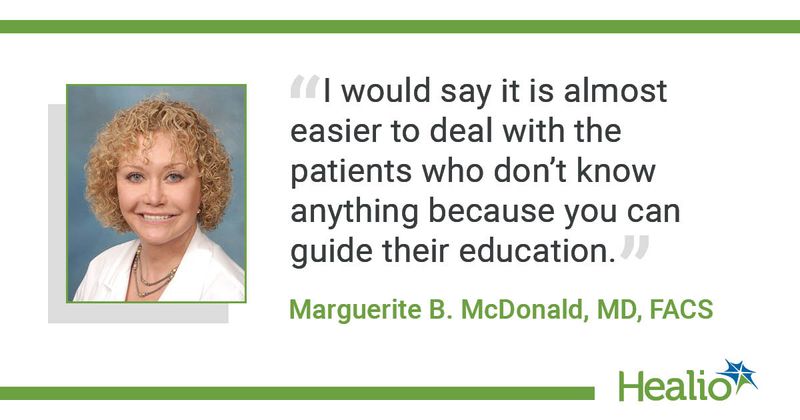Communication, comfort help allay fear of cataract surgery
Click Here to Manage Email Alerts
The prospect of cataract surgery is a frightening one for many patients, but open lines of communication and patient education can allow ophthalmologists to guide wary patients through the process.
“What I always tell my patients is that you would be crazy not to be afraid because it’s your eyes, it’s your body, it’s your most precious sense,” Jack S. Parker, MD, PhD, told Healio/OSN.

Parker, who co-authored the book What I Say: Conversations That Improve the Physician-Patient Relationship with Robert H. Osher, MD, performs cataract surgery every week. When a patient comes to the office expressing fear, it can be invalidating to downplay that emotion, Parker said.

In a Johnson & Johnson Vision global survey assessing cataract awareness, only 30% of American respondents said they would be “very likely” to undergo cataract surgery, with 29% of those surveyed citing fear as the main deterrent.
“I always tell people that we are going to treat it like it is the most important thing we are doing all day, but it is the most common procedure performed in the United States, and we expect to have a very good result,” Parker said.
Other reasons cited in the survey for choosing not to undergo cataract surgery included concerns about efficacy of the procedure and lack of knowledge.
“I would say it is almost easier to deal with the patients who don’t know anything because you can guide their education,” Marguerite B. McDonald, MD, FACS, said, adding that patients with cataracts often fall into one of two categories: those who have done their own internet research and those who know just about nothing.
“I try to reassure and educate them without overloading them with technical details,” McDonald said. “For most patients, it is best if you guide their education. That means that you suggest which websites they go to or which videos they watch because there is some suboptimal, unvetted information on the internet. I want my patients to watch videos and get information from reliable internet sites. Knowledge — accurate knowledge — is power. When they know what will be happening to them at every stage during their stay at our ambulatory surgery center, and the great chance of success, they are much calmer and happier; they are more confident and cooperative.”
In addition to educating patients with video, McDonald also explains the statistics supporting the high success rate of modern cataract surgery.
Likewise, communication is a central strategy for Parker when addressing unsure patients. It helps to enter the conversation with a routine script, he said.
“Everybody is different, and you want to treat people like people, but on the other hand, if you know how to explain things accurately and precisely, and you have considered your words before they come tumbling out of your mouth, they are likely to be much more comforting and reassuring,” Parker said.
Performing cataract surgery in the office adds an additional measure of comfort, according to Parker.
“We do in-office surgery for all of our patients requiring cataract extraction, and that has made a huge difference,” Parker said. “The whole process, from start to finish, takes about an hour, and that includes check-in and check-out.”
When patients go to a hospital for their surgery, the procedure “feels like a big deal”; in contrast, in-office surgeries allow patients to be somewhere familiar where they are comfortable, Parker said.
“People get the idea that if they are going to the hospital, they are getting something serious done, but if they are going to the office, it’s probably a more minor procedure,” Parker said.
Reference:
- New survey finds critical need for education on cataracts and modern treatment options. https://www.jjvision.com/press-release/new-survey-finds-critical-need-education-cataracts-and-modern-treatment-options. Published Dec. 1, 2020.
